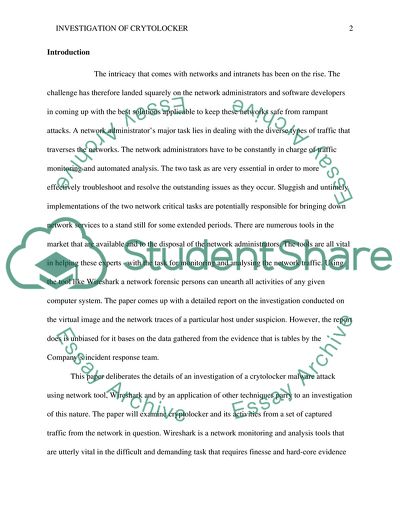Cite this document
(Investigation of Crytolocker Report Example | Topics and Well Written Essays - 4250 words, n.d.)
Investigation of Crytolocker Report Example | Topics and Well Written Essays - 4250 words. https://studentshare.org/information-technology/1868590-incident-response-investigation-of-crytolocker-trace-analysis-with-wireshark-and-windows-2003-server
Investigation of Crytolocker Report Example | Topics and Well Written Essays - 4250 words. https://studentshare.org/information-technology/1868590-incident-response-investigation-of-crytolocker-trace-analysis-with-wireshark-and-windows-2003-server
(Investigation of Crytolocker Report Example | Topics and Well Written Essays - 4250 Words)
Investigation of Crytolocker Report Example | Topics and Well Written Essays - 4250 Words. https://studentshare.org/information-technology/1868590-incident-response-investigation-of-crytolocker-trace-analysis-with-wireshark-and-windows-2003-server.
Investigation of Crytolocker Report Example | Topics and Well Written Essays - 4250 Words. https://studentshare.org/information-technology/1868590-incident-response-investigation-of-crytolocker-trace-analysis-with-wireshark-and-windows-2003-server.
“Investigation of Crytolocker Report Example | Topics and Well Written Essays - 4250 Words”. https://studentshare.org/information-technology/1868590-incident-response-investigation-of-crytolocker-trace-analysis-with-wireshark-and-windows-2003-server.


